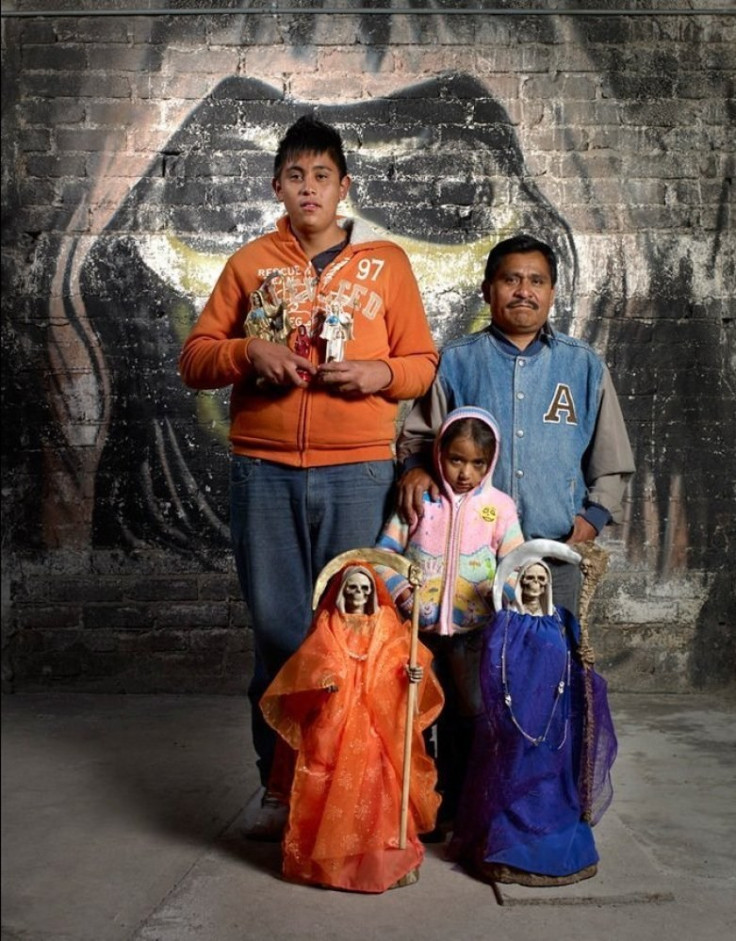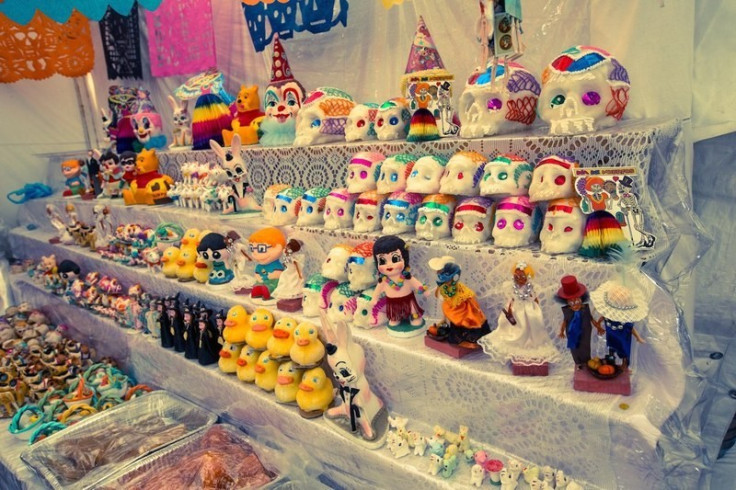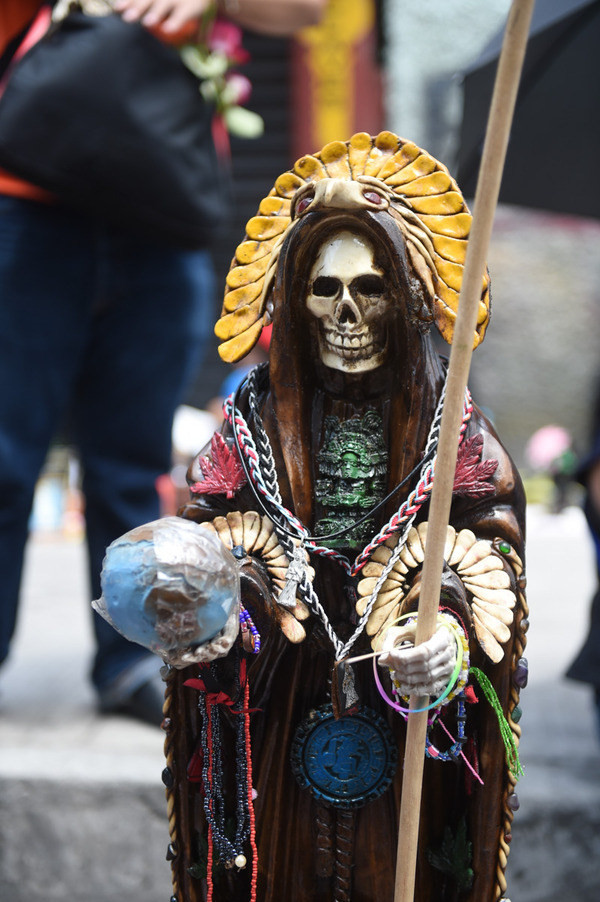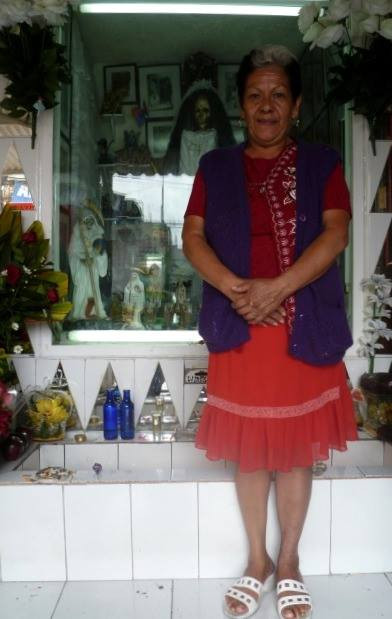Halloween 2014: How Mexican People Celebrate the Day of the Dead
During Halloween in Mexico, Catholics pay homage to the skeleton folk saint Santa Muerte

Halloween, or All Hallows' Eve, is celebrated on 31 October, the day before the Christian feast day All Saints Day, which commemorates all the religion's saints. That day is followed by All Souls Day, during which people pray for the dead.
During this time Mexico celebrates Dia de los Muertos – Day of the Dead – where families and friends gather together to pay homage to dead relatives. The celebration takes place from 31 October until 2 November.
Death has a unique place in Mexican culture, according to Andrew Chesnut, professor of religious studies at Virginia Commonwealth University.
Speaking to IBTimes UK, he defined the Day of the Dead as "a festive commemoration, with Aztec roots, of deceased loved ones.
"Celebrations include colourful altars with the favourite food and drink of the departed, all night vigils at the cemetery and special foods such as pan de muerto [bread of the dead] and miniature skulls made from sugar."

Halloween and Santa Muerte
Mexican people worship several saints associated with death. One of the most famous is Santa Muerte, or Bony Lady, a female skeletal saint believed to deliver healing, protection, love and safe delivery to the afterlife to her followers.
She was first mentioned in the Mexican historical record in 1793, when the Inquisition received a report of indigenous people in central Mexico venerating a skeletal figure they called "Saint Death".

"The cult of the Bony Lady is now the fastest growing new religious movement in the Americas with an estimated 10 to 12 million devotees in Mexico, Central America and the US," said Chesnut, who is also author of Devoted to Death: Santa Muerte, the Skeleton Saint.
"Devotees of Santa Muerte tend to be flexible and eclectic so many of them incorporate the skeleton saint into their Day of the Dead commemorations, and since Halloween is increasingly popular in Mexico, many also participate in Halloween on 31 October.
"Over the past few years I'm seeing more and more Europeans, especially Britons, Italians and Americans wearing Santa Muerte costumes for Halloween," he continued. "An Italian artist cooperative is holding its second annual Santa Muerte Halloween party this weekend [from 31 October until 2 November] in Rome.
"An even more popular costume in Europe, the US and even Mexico is that of Catrina Calavera, the Skeleton Dame, often fashioned in Frida Kahlo style. The Dame is an iconic skeleton dressed in early 20th-century finery, created by the great graphic artist José Guadalupe Posada as a satirical caricature of the Mexican elite of the time."
Sant Muerte, the Day of the Death and Catrina Calavera are part of what Chesnut calls "the trinity of death: the three main cultural manifestations of mortality in the land of the Aztecs".

Santa Muerte Shrines
Santa Muerte devotees often build shrines to worship the lady of death. The shrine of Enriqueta Romero, also known as Dona Queta, is the most famous of the thousands that exist today.

"As gratitude for her faithful visits in prison, Dona Queta's son gave her a lifesize statue of Saint Death, which she installed in the tiny kitchen of her home where she made quesadillas to sell to neighbours and passers-by in one of Mexico City's most notorious barrios, Tepito," Chesnut said.
"The six-foot effigy could be seen by customers, many of whom began to spontaneously regale the saint of death with offering of flowers and tequila.
"No longer able to accommodate all the offerings, Dona Queta and her husband Ray decided to move the statue outdoors, via a glass case built on to the exterior wall facing the sidewalk.
"On Halloween of 2001 they held a small inaugural ceremony, which marks the transformation of what had been an occult devotion unknown to 99% of Mexican to the burgeoning public cult that it is today.
"Dona Queta is thus the pioneering godmother of the cult.
However, Enriqueta Vargas, leader of the most popular temple in Mexico City and owner of the gargantuan 22-meter tall effigy is quickly becoming the new national spokesperson for the cult."
© Copyright IBTimes 2025. All rights reserved.




















